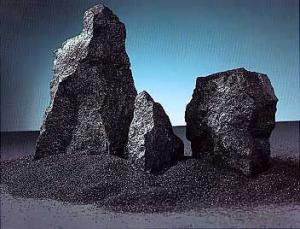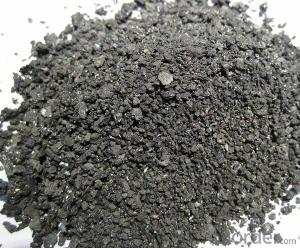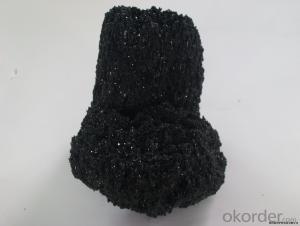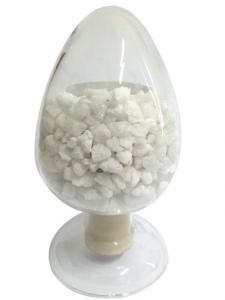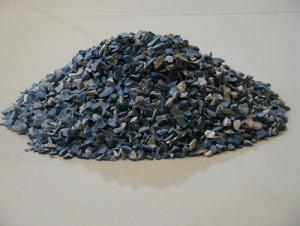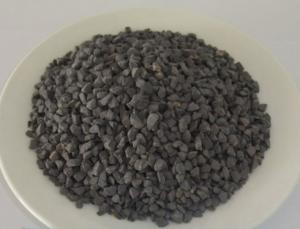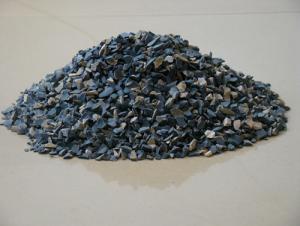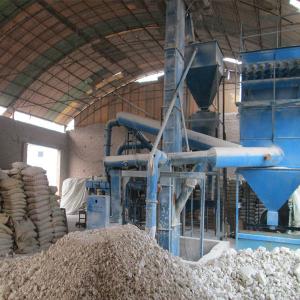Silicon Carbide/SiC Composition in Minerals & Metallurgy
- Loading Port:
- Tianjin
- Payment Terms:
- TT OR LC
- Min Order Qty:
- 25 m.t.
- Supply Capability:
- 3000 m.t./month
OKorder Service Pledge
OKorder Financial Service
You Might Also Like
Silicon Carbide/SiC Composition in Minerals & Metallurgy
1.Structure of Silicon Carbide Description
Black Silicon Carbide is produced with high temperature in a electric resistant furnace from a mixture of quartz sand and petroleum coke.
Black silicon carbide is typically used for working on cast iron ,non-ferrous metals, stone, leather, rubber, and other materials which requires sharp cutting characteristics. The mineral is also used widely as a refractory material and metallurgical additive.
2.Main Features of the Calcined Bauxite
Its hardness is between that of fused alumina and synthetic diamond and mechancial intensity of it is also greater than that of fused alumina. It is brittle and very sharp and has a certain degree of electrical and heat conductivity.
3.Main usage of the Calcined Bauxite
1.Grinding non-ferrous materials, rock, stone, leather, rubber, finishing tough and hard materials
2.Bonded abrasive tools, lapping and polishing
3.Widely used as a metallurgical additive and refractory material
4.Refractory
4. Calcined Bauxite Images
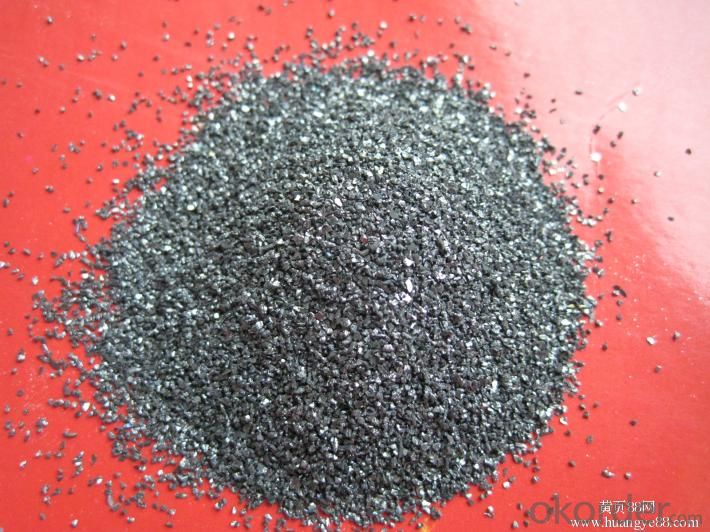
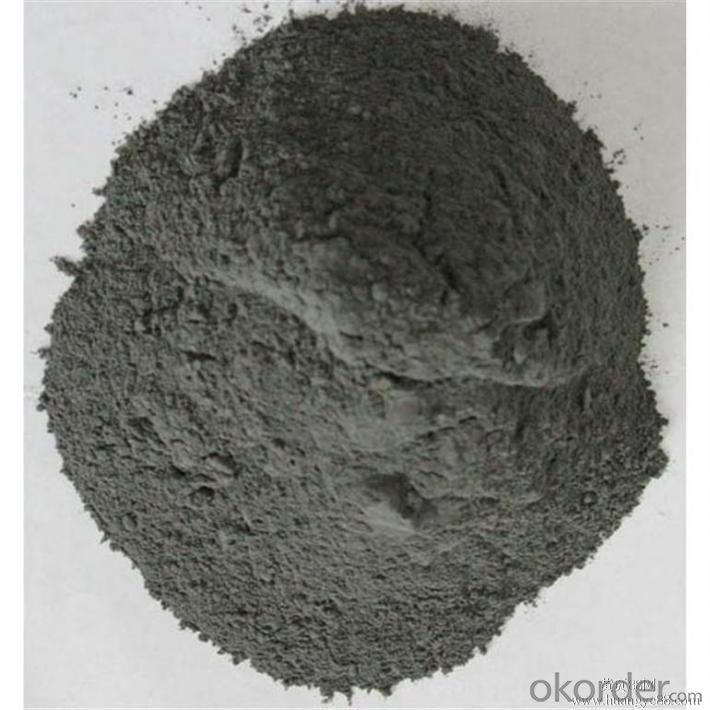
5. Calcined Bauxite Specification
1. corrosion resistance, high strength, high hardness,
2.good wear-resisting performance,resist to shock
3.stable chemical performance, high thermal conductivity, high resistant temperature
6.FAQ of Calcined Bauxite
1). Q: Are you a factory or trading company?
A: We are a factory.
2). Q: Where is your factory located? How can I visit there?
A: Our factory is located in Ningxia, China. You are warmly welcomed to visit us!
3). Q: How can I get some samples?
A: Please contact me for samples
- Q:What are the specifications of fire resistant bag?
- Fire resistant bag is featured by wear resistance, resistance to heat, shock, acid and alkali, somke, fire, bacteria, mould and static electricity. Fire resistant bag is generally used for table top, desktop, wall face, cabinet, office furniture, wall-hung cupboard, etc. The common specifications include: 2135mm×915mm, 2440mm×915mm, 2440mm×1220mm, thickness 0.6-1.2mm. I hope it can help you.
- Q:What kind of refractory bricks material is best?
- 1, high alumina brick: The content of Al2O3 is more than 75. The refractoriness is higher than the clay brick. It has good resistance to acid, alkali and erosion and is suitable for cement kiln calcining zone and other places. It has long operation life, but the price is high. 2. dolomite?brick: Formation of coating has good performance, good corrosion resistance, but f-CaO is contained in bricks. It is hydratable and difficult to transport and keep, so it is less used in the production. 3. magnesia-chrome bricks: It has good formation of coating and is used for burning zone. The disadvantage is poor thermal shock resistant performance. Besides, positive Hexavalent Cr is highly toxic. Countries that produce and use magnesia-chrome bricks gradually decrease on the international. Now production units using this brick should find alternatives as soon as possible. 4. spinel brick: It is often used in transitional zone and has good seismic performance, good reduction resistance, but refractoriness is a little bit poor. 5. anti-stripping brick: This brick contains a small amount of ZrO. Martensite phase transformation happens to form thin crack during temperature-rise period. It has strong alkali?resistance, anti-stripping performance and good slag resistance. 6. phosphate brick: It has low refractoriness, but it has strong strength and good shock resistance. It is often used in grate?cooler, hot kiln hood, etc. 7. carborundum brick: It has high temperature resistance(1800 degree, softening temperature under a fixed load is 1620-1640), small coefficient of thermal expansion, high cold-resistance heat-resistance, abrasion resistance. It is suitable for cooling zone and kilneye. 8. silmo brick: It has good thermal shock resistance, high strength, good abrasion resistance, and is suitable for transitional belt.
- Q:What are refractory materials?
- Refractories can be divided to two categories based on the shape and three categories according to the chemical nature of acidity, neutralily and alkalinity. Alkaline refractory materials are magnesia-carbon brick, magnesia chrome brick, calcium magnesium brick and magnesia-chrome bricks. Neutural refractory mateial are high alumina brick, corundum brick and clay brick. Case-hardened refractory materials are castable, ramming mass, gunning mix, coated mix, dry vibration material, etc.
- Q:What are the meanings of azs, 34% and ec in fused brick?
- The fused brick, also called zircon corundum brick, is shorted as AZS for three chemical components in Al2O3-ZrO2-SiO2 ternary diagram. I don't know the meaning of EC.
- Q:What kind of materials can be tested their electrical resistivity in the current refractory industry?
- Graphite, Magnesium Oxide, and alumina are all feasible.
- Q:What refractories can withstand high temperature above 2100 degrees?
- Usually a dryer will not have such a high temperature. I do not know what you would use it for. Refractory cement coupled with quartz sand can work for 4 to 5 hours. So you can try cement coupled with corundum or superfine bauxite for better effect.
- Q:Does anyone know fire-proof material of fireproof wooden door?
- Fireproof wooden door goes through the flame treatment, so it can prevent fire. Its principle: Fire-retardant treated timber has become flame retardant material itself and its fire endurance has increased. The commonly used method of fire retardant treatment for timber including: Spraying method, soaking method, boiling method, vacuum method, vacuum-pressure method. Spraying method and soaking method are generally used for timber surfaces which are no longer going through planing process, and thin plate fire retardant treatment, whose thickness is less than 10mm .
- Q:What refractories are accessible with ease in daily life?
- Basically there have all materials. But it depends on your needs.
- Q:Which are fireproofing external wall materials?
- For example, Grade-A waterproofing external wall thermal insulation material: glass wool, foam glass, foam cement, hole-closed perlite, rock wool; Grade-B1 waterproofing external wall thermal insulation material: XPS after special treatment. There are also PU after special treatment, phenolic aldehyde and gelatine powder polyphenyl granule. Grade-B2 waterproofing external wall thermal insulation material: PE, and EPS. Grade-A: Completely fireproofing buliding material. Without probility of burning, completely fireproofing buliding material is expensive and unnecessary for home decoration. It is usually used in arsenal and electrical equipment department store. Grade-B1: nonflammable building material: With good flame resistance, nonflammable building material will not burn in the air or at high temperature, but it maby burn in the air and at high temperature. But when the fire source ransfers, it will be out immediately. Grade-B2: combustible building materials. Due to its small firresistance, it is easy to burn in the air or at high temperature, such as wooden building materials. The above are external wall fireproofing material of different classes.
- Q:What is the most reasonable drying heating curve of magnesia refractories? Products of less than 0.5T
- The material is very troublesome, it might crack horrendously if not baked well and all of them may be scraps after being took out from the furnace. Magnesia hydration is inevitable during the baking process. As volume expansibility of magnesite reaches 200%, so it is easy to crack. The key to bake is to quickly rule out the water vapor in furnace, especially within 150 degrees Celsius. After quickly ruling out the water vapor in furnace to avoid excessive reaction with magnesia of 150 degrees, it can be operated in accordance with convention. In addition, you should pay attention to the heat sources, for which i recommend electrical and coke to avoid generating a lot of water vapor during the natural gas combustion process which will worsen the situation.
1. Manufacturer Overview |
|
|---|---|
| Location | |
| Year Established | |
| Annual Output Value | |
| Main Markets | |
| Company Certifications | |
2. Manufacturer Certificates |
|
|---|---|
| a) Certification Name | |
| Range | |
| Reference | |
| Validity Period | |
3. Manufacturer Capability |
|
|---|---|
| a)Trade Capacity | |
| Nearest Port | |
| Export Percentage | |
| No.of Employees in Trade Department | |
| Language Spoken: | |
| b)Factory Information | |
| Factory Size: | |
| No. of Production Lines | |
| Contract Manufacturing | |
| Product Price Range | |
Send your message to us
Silicon Carbide/SiC Composition in Minerals & Metallurgy
- Loading Port:
- Tianjin
- Payment Terms:
- TT OR LC
- Min Order Qty:
- 25 m.t.
- Supply Capability:
- 3000 m.t./month
OKorder Service Pledge
OKorder Financial Service
Similar products
New products
Hot products
Related keywords

